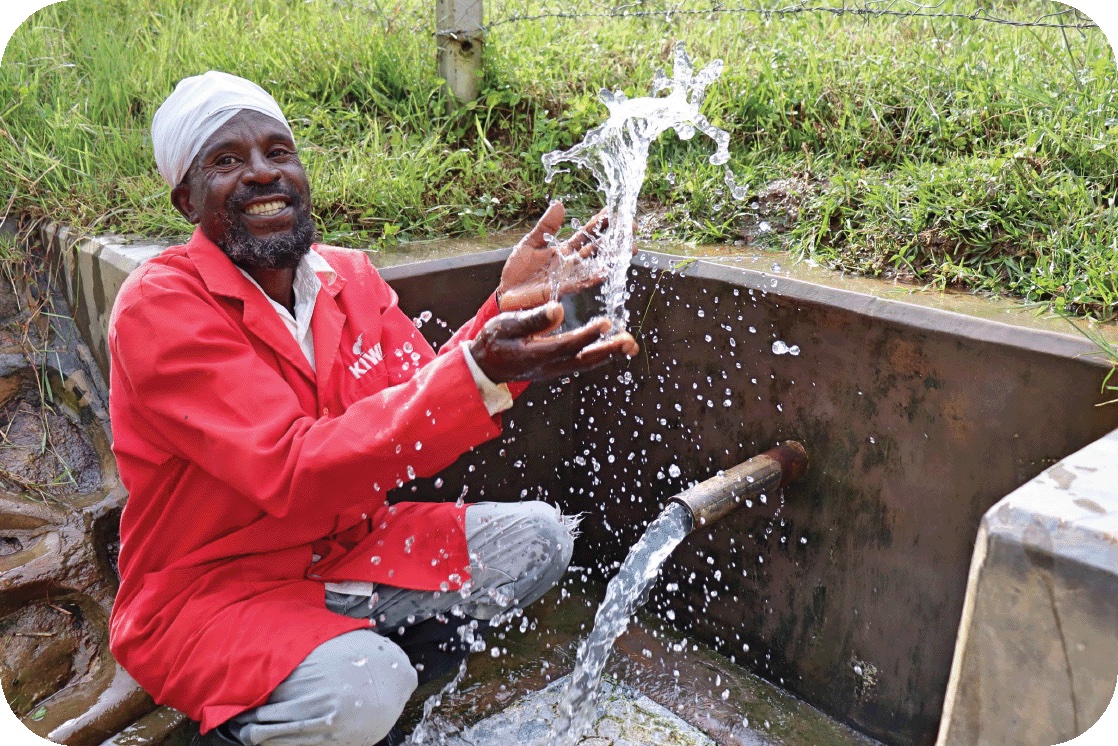What we learn together
Monitoring isn’t the same as Reliability

“A watched pot never boils” is an axiom my mother often shared growing up. I never bought it. I knew if I stood there long enough, even though my perception of time might be altered, if I kept heat underneath a pot of water, it would boil regardless of my gaze. My monitoring of the pot did not, and cannot, change the laws of thermodynamics. Monitoring something doesn’t change anything about it.
We learned this truth about simple observation in our early days. As The Water Project began asking questions about water point reliability – viewed over time – we noticed both a lack of actionable data in the broader water sector and, more importantly, any solid plans to address it.
Looking in the mirror and having three or so years behind us, we recognized there was a growing collection of our own past work that we could begin to observe and measure. What was still working, and what had fallen into disrepair?
At the time, this simple monitoring of past work wasn’t the norm. Not at scale. Not across every community. Many organizations, both governmental and not, installed water projects worldwide, assuming that local communities and mechanics can and would maintain their water points.1 It turns out that more often, they can’t and don’t.2 A wide study of hand pumps in sub-Saharan Africa revealed, “On average, one in four handpumps was not working at any point in time.”3 Water projects, especially wells with handpumps, can quickly fall into disrepair without routine maintenance. Sometimes, major overhaul work is needed. And in most cases, when water stops flowing from a pump, it never starts again. People move on to get water that is more convenient, more reliable, and oftentimes, less safe.
We “monitored” this for a bit. And what became abundantly clear is that without continued intervention, monitoring was pointless. Without repairs, we would simply watch past investments stop producing impact. Lost access to clean water meant the water crisis quickly returned to communities. And if all we did was watch… nothing was being solved.
Monitoring is just the first step. Resolving routine issues is what truly matters.
Learning this, we charted a way forward that accounts for the need to provide ongoing service and support to communities to maintain, not just monitor, water points. We call it The Water Promise, and it is our commitment to every community we serve with first-time access to water.
Reliable access to water, it turns out, is far more critical to building resilient communities than any intermittent “solution.” Truly reliable water changes behavior. When people can rely on a pump to work every day, how their day is organized changes. The time no longer needed to gather water from far away means other investments can be made – but only if it can be counted on.
Of course, maintaining water points isn’t free. There’s a cost. And it’s a significant one that we now account for at the beginning of every new water project.4 We understand that long term reliability only occurs if we take into account the total costs of keeping the water running for the long term, which can span decades. We regularly evaluate new processes, emerging technologies, and new models of supporting and mitigating these expenses, but there is more to be learned and implemented. Nevertheless, today, we know that 96% of the water points we manage are functional.5 We monitor. And every one of the communities served by those water points knows who to contact if and when their water point fails to perform. And we respond.
We’ll continue to work to cement this truth across the water sector – that the time for simply monitoring past work is itself past. We must, instead, commit to reliability. Otherwise, broken-down water points will continue to undermine any hope for a true end to the water crisis. The reliability of access to clean water should be something we all have the privilege of taking for granted.
1. The assumption that communities would manage their own water points was convenient for both organizations and governments who focused investment in new water point installations rather than in the high cost development of post construction support mechanisms that would provide needed access to affordable maintenance and repair resources. Communities were often blamed for poor management without ever having the resources to fix the problems. See Luke Whaley et al 2019 Environ. Res. Lett. 14.
2. Through a mixed method study in Malawi and consolidation of the existing literature, Ellie Chowns illustrates how many community-based management groups face technical and financial challenges that prevent water system repairs. Based on these results, the author calls for more centralization, standardization, professionalization and upward accountability in rural water service management. See Chowns, E. 2015. “Is Community Management an Efficient and Effective Model of Public Service Delivery? Lessons From the Rural Water Supply Sector in Malawi.” Public Administration and Development (vol. 35, p. 263-276).
3. The research by Kirsten Danert here shows the differences from country to country, with a range of 11% in Burkina Faso to 38% down at any given time in Nigeria. It should be noted that this can vary tremendously from county to county within countries where water regulation occurs on the county level. https://www.rural-water-supply.net/_ressources/documents/default/1-1046-2-1647360829.pdf, p. 17.
4. For a helpful resource on life-cycle costing for water points see Burr, P., Fonseca, C. 2013. “Applying a Life Cycle Costs Approach to Water” IRC International Water and Sanitation Center. https://www.ircwash.org/sites/default/files/20130208_8_wp_water_web_2.pdf
5. A variety of WASH studies confirm that this above-average functionality rate may be attributed to an effective external support program, at least in part. Positive relationships between external support and rural water system functionality, water quality, financial stability and user satisfaction has been demonstrated in a variety of rural contexts. Miller et al. 2019. “External support programs to improve rural drinking water service sustainability: A systematic review” STOTEN.
Home More Like ThisTweet